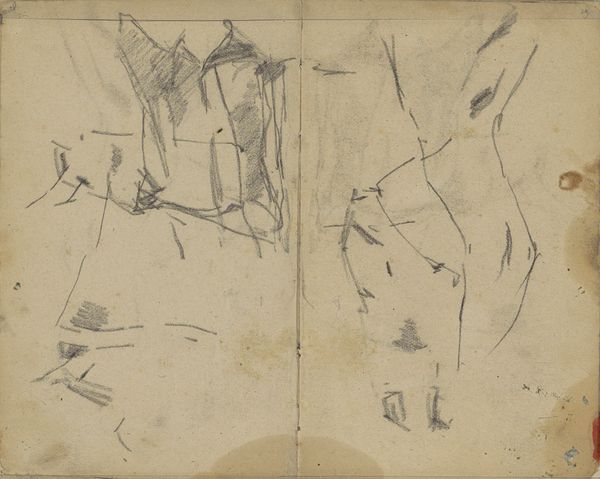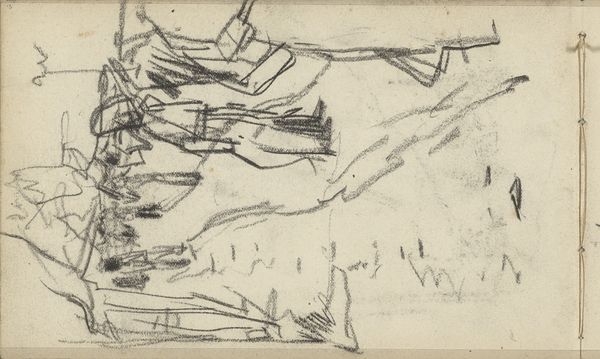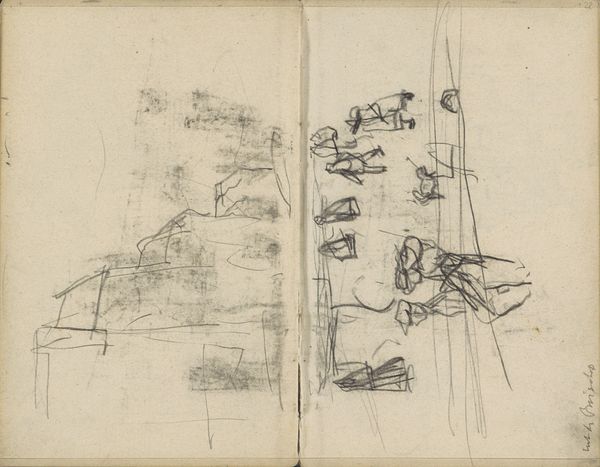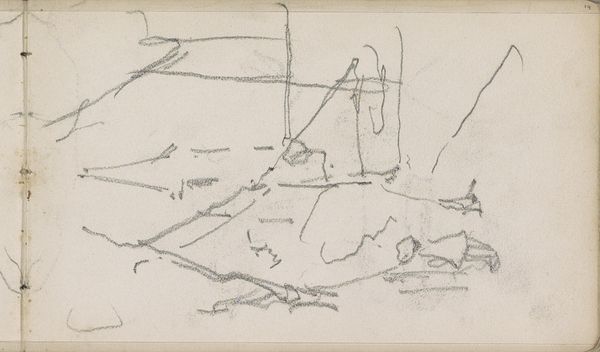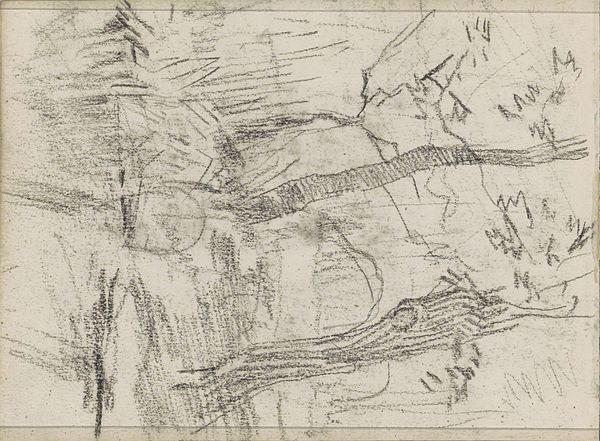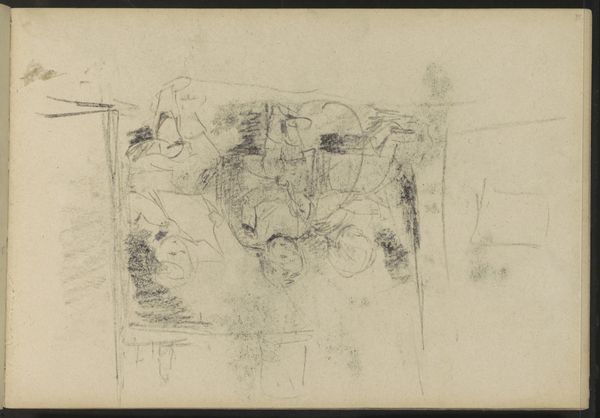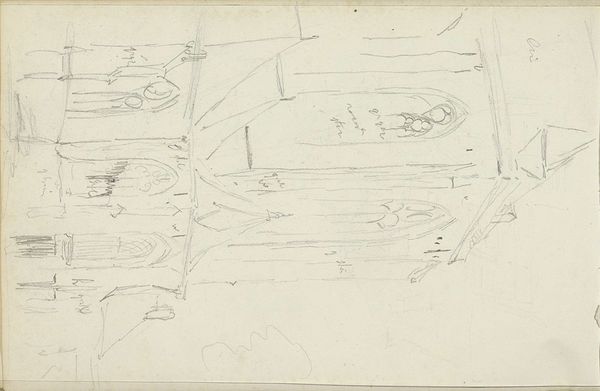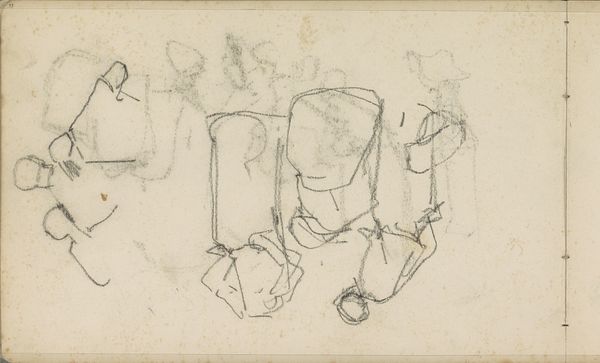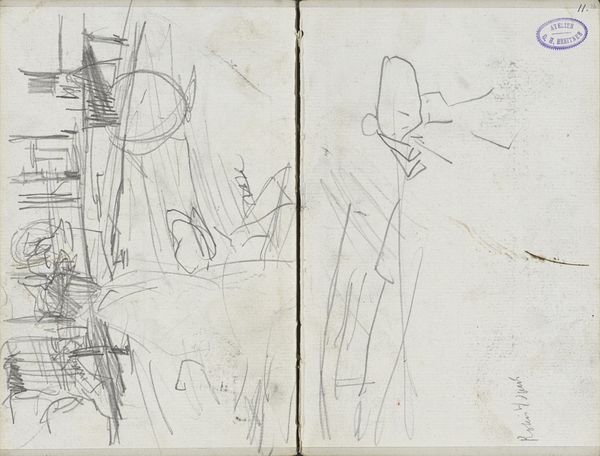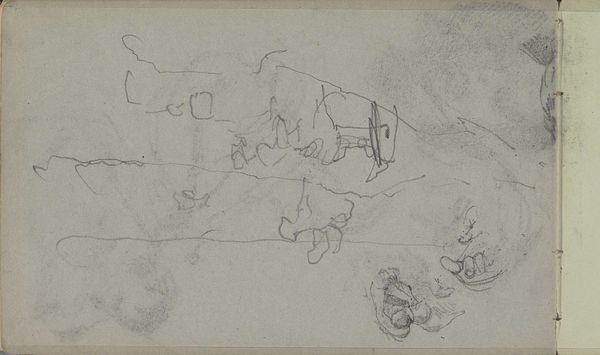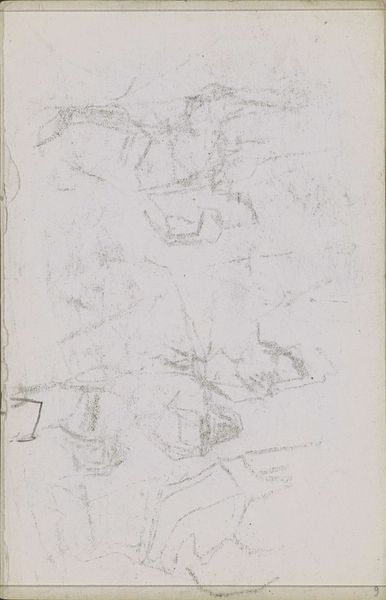
#
light pencil work
#
pen sketch
#
sketch book
#
personal sketchbook
#
sketchwork
#
ink drawing experimentation
#
pen-ink sketch
#
sketchbook drawing
#
sketchbook art
#
initial sketch
Copyright: Rijks Museum: Open Domain
Editor: This is "Figuurstudies" by George Hendrik Breitner, dating back to around 1880-1882. It’s currently held in the Rijksmuseum, and looks like it’s done with pencil and ink on paper. What strikes me immediately is how informal it feels, almost like peering into the artist’s private thoughts. What do you see in this piece? Curator: It’s like glimpsing a fleeting moment frozen in time, isn't it? Consider the image— a flurry of lines, forms barely coalescing into figures. But look closely. What symbols persist? The human form, fragmented and repeated. Hands reaching, faces in repose. Each repetition reinforces the central idea – humanity, in its myriad forms. Editor: So, you’re saying the repetition of the figures, even though incomplete, amplifies the symbolic weight of “humanity?" Curator: Precisely! Breitner isn't just sketching bodies, he is investigating the human condition, making notes on his world. Consider the historical context. The late 19th century, a time of rapid industrialization, social change, and shifting perceptions of the self. Are these fragmented figures a reflection of that societal fragmentation, perhaps? Or might the incompleteness indicate movement and rhythm of urban life that Breitner portrayed so brilliantly. What visual clues within the work point to that potential sense of hurried movement? Editor: Hmm, maybe the loose, gestural lines, and the way the figures overlap? It gives a sense of things happening quickly. Curator: Indeed! Breitner's work holds echoes, perhaps intentionally, of past masters who also sought to capture the fleeting and the fundamental in the human form. The images retain a visual language linked to memory and observation that stretches far beyond a simple sketchbook. Editor: This has really given me a fresh perspective, seeing how seemingly simple sketches can hold such complex cultural meaning. Curator: Exactly, looking beyond the surface often uncovers rich cultural memory, turning mere sketches into poignant mirrors reflecting human existence through time.
Comments
No comments
Be the first to comment and join the conversation on the ultimate creative platform.
